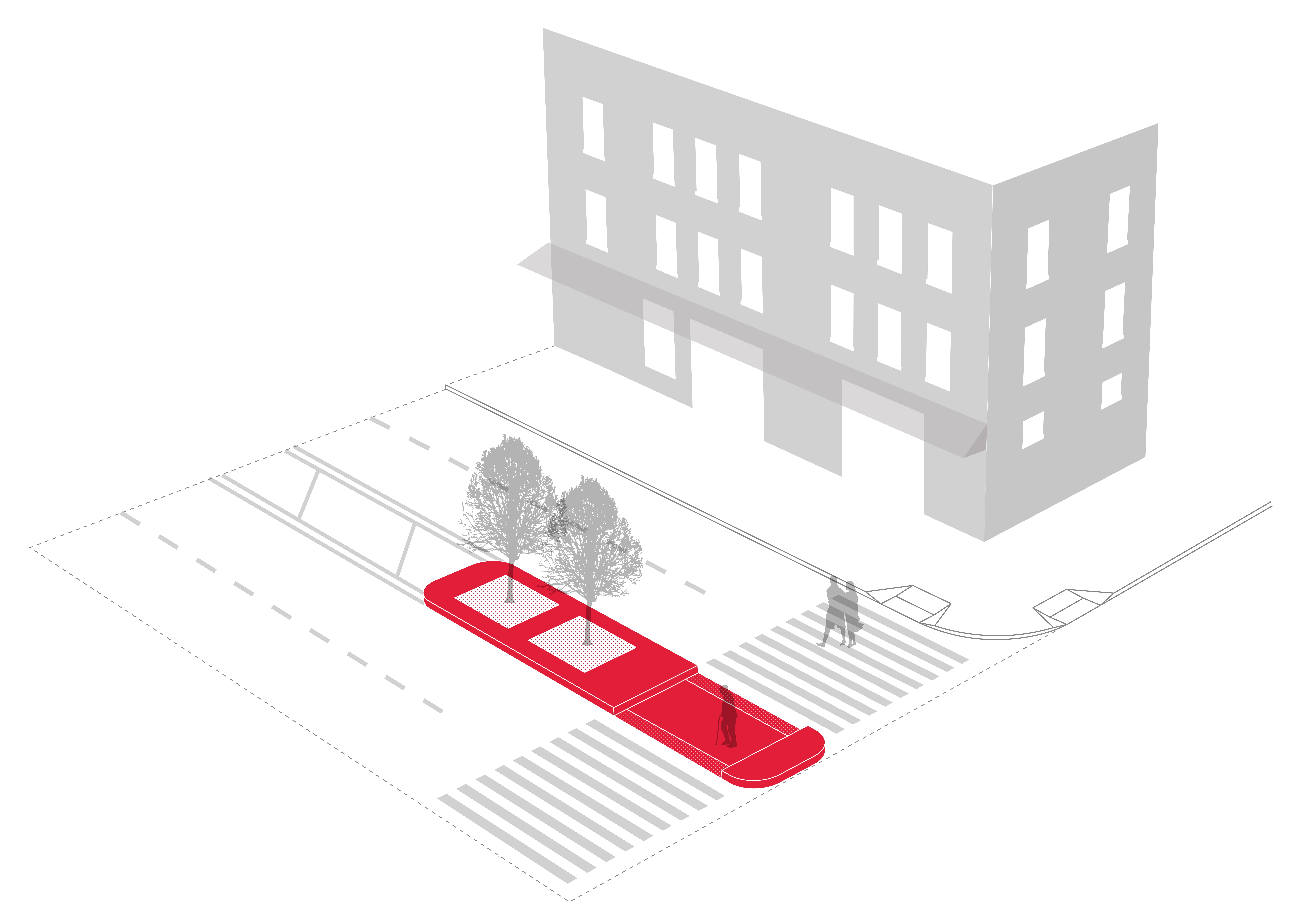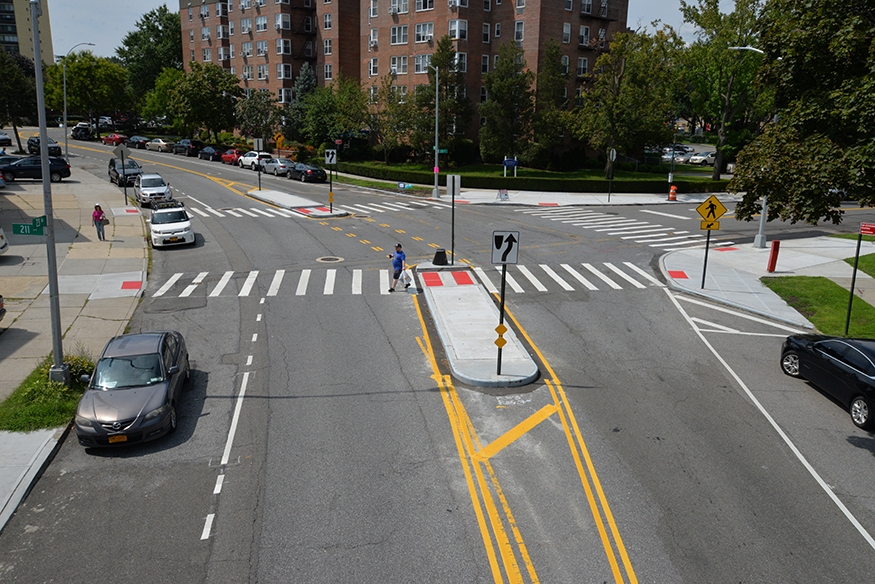Usage: Wide
A raised area located at crosswalks that serves as pedestrian refuge separating traffic lanes or directions, particularly on wide roadways. Also known as a “median refuge island.” Used at pedestrian crossings when a full raised median is not feasible. A pedestrian safety island confers most of the same benefits as a full Raised Median at pedestrian crossings. Full raised medians should be used rather than pedestrian safety islands wherever possible.


211th Street and 23rd Avenue, Queens
Riverside Drive, Manhattan
Benefits
- Enhances pedestrian safety and accessibility by reducing crossing distances and providing refuge for pedestrians to cross road in stages
- Calms traffic, especially left turns and through-movements, by narrowing roadway at intersection
- Reduces risk of vehicle left-turn and head-on collisions at intersection
- Can green and beautify the streetscape with trees and/or vegetation, potentially including stormwater source controls
- Trees increase the visibility of the island, thereby usually enhancing safety
Considerations
- May impact underground utilities
- Landscaping (excluding street trees) or stormwater source controls require a partner for ongoing maintenance,
- including executing a maintenance agreement
- If there is a maintenance partner, design should consider the inclusion of irrigation system for long term maintenance
Application
See application guidance for Raised Medians
Design
See design guidance for Raised Medians
- Typical island accommodates two street trees and where appropriate safety bollards. See Tree Beds and Raised Median (Curb Height) in the Landscape chapter. Street trees must not block vehicles’ line of sight to the traffic signal


